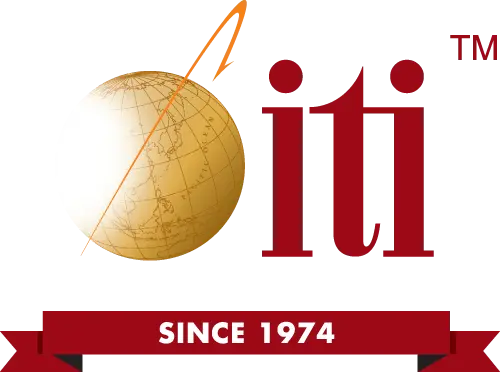
An Ear to the Ground: Top Tips for Demand Forecasting and Planning
When we discuss contract manufacturing with our clients, we like to say that there is a significant, often overlooked detail hiding in plain sight, buried in the word “contract.” Each contract is a weighted transaction. Our OEM clients provide capital and contract manufacturers provide a quantity of products across a given timeline in return. But how much will they need and when? It comes down to demand forecasting and planning.
Remember, once the OEMs receive products from their manufacturers, they take them to market and exchange them once again for revenue, completing the sales cycle. So in a major way, manufacturing contracts are directly “weighted” against the needs of end users, not just what the OEMs think they can sell.
This situation presents two variables to balance out: the sales levels OEMs think they can achieve and the actual levels that they can provide against end-user needs. Good thing we have words for each of these processes: demand forecasting and demand planning.
Defining Demand Forecasting and Planning
To help better define these two concepts, let’s introduce two analogies:
- Demand forecasting is a lot like keeping an ear to the ground, listening for what end users will buy, how much and when. Head down, eyes closed, we only listen for the sounds of sales potential around us. In this way, demand forecasting gauges the marketplace quite broadly, seeking out a prospective sales prediction with all other real-world variables notwithstanding.
- Demand planning comes in once we’ve heard the market’s demands and have a forecast in mind. Then we can turn our eye toward the horizon and observe the world in its entirety with all our senses. Here, we graft the conceptual forecast onto reality, quantitatively measuring how much product can actually be moved through our supply chain, how fast, in what ebbs and flows, at what cost points and at what risk.
Where a demand forecast is a conceptual opportunity, a demand plan is an actionable solution aiming at a specific target. How does this work in practice? We cover that next.
Understanding Demand Forecasting and Planning
From the perspective of OEMs, manufacturing contracts come at the end of a demand forecasting and planning process. To better explain this process, let’s pull the workflow apart into its individual steps:
Demand Forecasting Steps
- Opportunity assessment: OEMs first assess the market landscape and formulate a theory on what products, quantities and frequencies the market will demand.
- Analytical modeling: With a sales theory in mind, OEMs then pick a mathematical model through which they analyze the opportunity against market data (considering sales patterns, trends, seasonality, etc). Common models include statistical, simple moving average, single exponential smoothing and linear regression methods.
- Data acquisition: Data is next gathered to fit into the model selected above. Since the goal is to arrive at a forecast of what end users will demand, data sources should focus on a combination of internal past sales activity and external economic outlooks.
- Initial analysis: Now the analytical model is run, and initial results are produced. As we know, the real world doesn’t always comply with neat estimations, so a level of human judgment and intuition must be added to this analysis.
- Testing, error checking and final forecasting: The updated model is now tested in multiple ways, such as forcing variables to extremes to confirm expected outcomes, as well as reverse-calculating past conditions to assure consistency with known results. A final forecast is produced and sent forward for approval.
While this process sounds complex (and it can be), the goal is to output a very easy-to-read forecast that management can use to see what the market may demand of their types of products. The demand forecast answers the question “What do we think the market will want to buy?”
Demand Planning Steps
- Managerial forecast review: Demand planning translates the forecast into an actual plan of attack, which begins with an OEM’s management team evaluating the forecast to see how predictions compare to their company’s reality. Here, managers carve out the portions of the forecast they wish to act upon.
- Data reinforcement: For actual planning purposes, much more data needs to be considered. Actual manufacturing capabilities, profit and expense margins, inventory capacities, distribution times, OpEx cost profiles, workforce limitations and many more factors are now added to the model.
- Competitor analysis: No business assumes how much market share they can capture without first analyzing how they stack up against their competition. Market saturation, blind spots, unfulfilled needs and other emergent competitive conditions are factored into the data model.
- Commercial and administrative review: Next, legal, tax and working capital, investment, insurance requirements and other administrative requirements are incorporated into the model, which all serve to push the plan in a direction that works within the OEM’s actual commercial constraints.
- Leadership approval and launch: With the original demand forecast now turned into an actionable demand plan, the OEM’s leadership takes a final look, adjusts as needed and approves the plan for launch. Once approved, the plan is locked in as the guiding light for the sales cycle to follow (typically a year).
The demand forecast answers the question “What do we think the market will want to buy?” The demand plan states what will actually be provided to the market, how, when, with what resources, at what cost and at what expected financial return.
Demand Planning With Contract Manufacturing
In no specific order, here are several tips for OEMs to consider when demand planning for their next contract manufacturing engagement:
- Avoid garbage in, garbage out. Demand forecasting and planning models are no better than the data put into them. As the saying goes, if we put garbage into a model, we are going to get garbage out. OEMs should ensure they use data that’s clean, relevant, accurate, timely and of sufficient volume. (Too little and too much data can equally distort a model into uselessness.)
- Aggregate data to smooth outliers. Especially for OEMs offering many SKUs across many segments, peaks and valleys in individual SKU-level data can cause major abnormalities in demand planning. To combat this, it’s often desirable to step up to a higher level in the model, aggregating SKUs into families or categories where noisy outliers will quiet down.
- Never underestimate the impact of logistics. Demand planning is heavily rooted in time-to-market factors. That is to say, the timing of spiking demand influences when products must be manufactured upstream, and lagging logistics times can jeopardize the plan of when to produce and distribute. In order to maintain a demand plan, OEMs should reflect logistics time bands in their models, as well as seek out backup plans and shippers if signs of delay need to be counteracted.
- Remember the 80/20 rule (Pareto distribution). Another well-known phrase in supply chain planning is the 80/20 rule, stating that 20 percent of a typical OEM’s products represent 80 percent of their sales. With this heavy bias toward only a few products, demand planning should also be biased accordingly so that plans do not erroneously undervalue a small product concentration’s impact on the overall business.
- Plan according to core values. Putting all the data talk aside, OEMs must spend time thinking about their truly important core values as a business. For most, customer satisfaction is paramount, as is maintaining a stellar reputation, avoiding embarrassing stockouts or wasted inventory, and being credible enough to earn partnerships with world-class contract manufacturers. Every demand plan should speak to these tenets and never value data over the company’s core mission.
Questions About Demand Forecasting and Planning?
At ITI Manufacturing, we’ve helped OEMs succeed in their contract manufacturing needs for more than 50 years. We’re happy to answer any questions you might have, so reach out to our expert team today.




